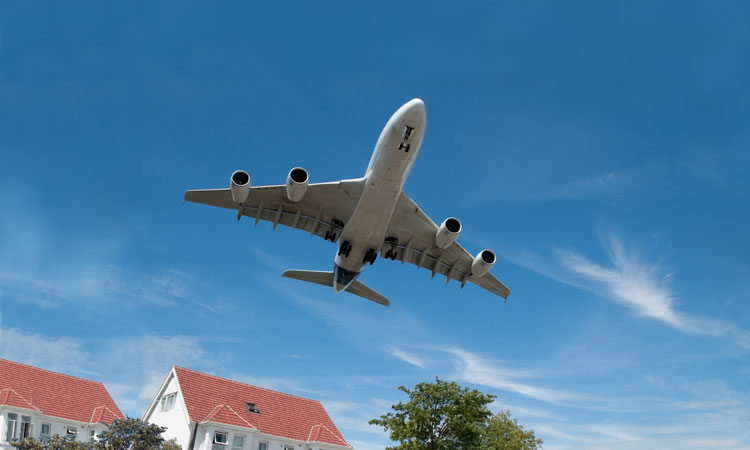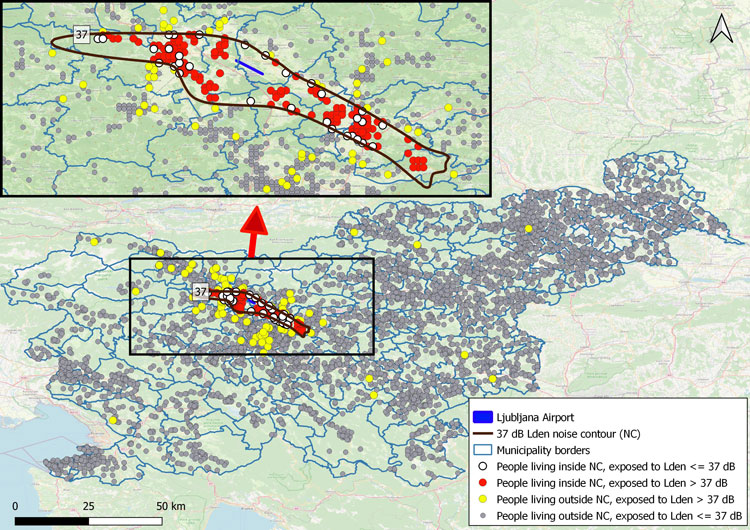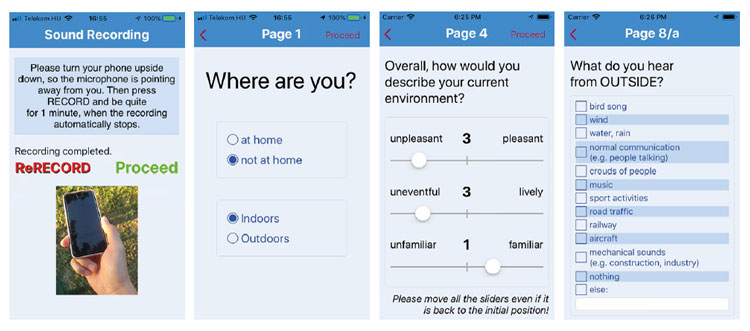The population’s daily movement and activities: Does it matter for aircraft noise impact assessment?
- Like
- Digg
- Del
- Tumblr
- VKontakte
- Buffer
- Love This
- Odnoklassniki
- Meneame
- Blogger
- Amazon
- Yahoo Mail
- Gmail
- AOL
- Newsvine
- HackerNews
- Evernote
- MySpace
- Mail.ru
- Viadeo
- Line
- Comments
- Yummly
- SMS
- Viber
- Telegram
- Subscribe
- Skype
- Facebook Messenger
- Kakao
- LiveJournal
- Yammer
- Edgar
- Fintel
- Mix
- Instapaper
- Copy Link
Posted: 3 March 2021 | Dr Dirk Schreckenberg, Emir Ganić, Ferenc Marki | No comments yet
Aviation noise is an unwanted side-effect for residential communities surrounding airports. The ANIMA Project aims to develop new methodologies, approaches and tools to manage and mitigate the impact of aviation noise. Emir Ganić, Research Associate at the University of Belgrade – Faculty of Transport and Traffic Engineering; Ferenc Marki, Associate Professor at the Budapest University of Technology and Economics and Head of the Laboratory of Acoustics and Studio Technologies; and Dr Dirk Schreckenberg, Psychologist and Managing Partner of ZEUS GmbH, Germany, explain how aircraft noise exposure is affecting people on the ground.


It is widely accepted that the most significant local environmental impacts related to airport operations arise from aircraft noise. Due to the increase of population in cities and their territorial expansion, cities grow closer to airports. Together with air traffic growth, this results in an increase in the number of people affected by aviation noise. A more thorough understanding of which locations, and at what time people are exposed to aircraft noise, can lead to smarter land‑use planning around airports in order to mitigate the negative impacts of aircraft noise.
The ANIMA Project: New approaches to go beyond noise reduction at the source
ANIMA (Aviation Noise Impact Management through Novel Approaches) is an EU Horizon 2020-funded research and innovation project that is striving to disseminate and enhance best practices in noise impact mitigation across the European Union’s (EU) Member States. This project aims to develop new methodologies, approaches and tools to manage and mitigate the impact of aviation noise, enhancing the capability of the aviation systems to respond to the growing traffic demands. ANIMA is different from other projects – it does not try to mitigate aircraft sound emissions at the source, but instead examines how the aircraft noise exposure is affecting people on the ground.
Working towards a more realistic aircraft noise impact assessment
The current methodology to quantify how many people are affected by aviation noise consists of developing noise contour maps of the yearly aircraft noise exposure and estimating the number of people affected by noise within these areas based on census data. When relying only on census information, inconsistencies might arise, since the residents may spend a considerable portion of the day outside the affected areas and, vice versa, people residing elsewhere may enter the affected areas to work or study, or for other reasons.
As opposed to the usage of census data, the ANIMA project’s approach incorporates the movements of the population during the day into the assessment of aircraft noise impact.
It is widely accepted that the most significant local environmental impacts related to airport operations arise from aircraft noise. Due to the increase of population in cities and their territorial expansion, cities grow closer to airports. Together with air traffic growth, this results in an increase in the number of people affected by aviation noise. A more thorough understanding of which locations, and at what time people are exposed to aircraft noise, can lead to smarter land‑use planning around airports in order to mitigate the negative impacts of aircraft noise.
The ANIMA Project: New approaches to go beyond noise reduction at the source
ANIMA (Aviation Noise Impact Management through Novel Approaches) is an EU Horizon 2020-funded research and innovation project that is striving to disseminate and enhance best practices in noise impact mitigation across the European Union’s (EU) Member States. This project aims to develop new methodologies, approaches and tools to manage and mitigate the impact of aviation noise, enhancing the capability of the aviation systems to respond to the growing traffic demands. ANIMA is different from other projects – it does not try to mitigate aircraft sound emissions at the source, but instead examines how the aircraft noise exposure is affecting people on the ground.
Working towards a more realistic aircraft noise impact assessment
The current methodology to quantify how many people are affected by aviation noise consists of developing noise contour maps of the yearly aircraft noise exposure and estimating the number of people affected by noise within these areas based on census data. When relying only on census information, inconsistencies might arise, since the residents may spend a considerable portion of the day outside the affected areas and, vice versa, people residing elsewhere may enter the affected areas to work or study, or for other reasons.
As opposed to the usage of census data, the ANIMA project’s approach incorporates the movements of the population during the day into the assessment of aircraft noise impact.
How can we obtain the daily movements of the population?
There are several ways to collect data of people’s mobility; for example, mobility data from national travel surveys, cellular data from mobile service providers, social media data and direct assessment of people’s behaviour through mobile devices. For ANIMA, we used two of them:
Use of national travel survey data
We have looked at the available data of daily activities of persons, including the various information for each event, such as origin and destination, time of the beginning of a trip, travel time and distance, the purpose of a trip, mode of transport, number of trips per day, etc. In most countries, this data can be obtained from National Statistical Institutes through national travel surveys.
Use of mobile application
Another way to obtain the population’s movement patterns and activities is through dedicated smartphone applications. Within the ANIMA project, a new mobile application called AnimApp has been developed for Android and iOS operating systems. Using this application, people respond to a short questionnaire on soundscape and landscape perception at different randomly selected times of the day. In addition, people’s location can be monitored once they have agreed to track their position via GPS. Of course, accessing mobility data must be in accordance with data protection regulations, since it is sensitive personal data.
ANIMA case study: Dynamic noise maps for Ljubljana Airport
To test how daily mobility patterns influence the population’s noise exposure, a case study has been carried out at Ljubljana Jože Pučnik Airport (LJU) within the ANIMA project. During this project, we focused on the 37dB noise level (Lden) – the noise threshold for becoming annoyed, according to the European Position Paper on annoyance due to transportation noise (2002). The results led to the conclusion that, even though people live at locations enclosed in the 37dB noise contour, 10.1 per cent of them (marked with white circles in Figure 1) are not exposed to aircraft noise levels (Lden) above 37dB due to daily mobility to locations away from the airport. Furthermore, apart from the 4,884 people that are living within the presented noise contour (marked with red circles), there are an additional 704 persons (14.4 per cent) also experiencing aircraft noise exposure (marked with yellow circles), even though they are located outside the 37dB noise contour. This can be explained by considering that people who live outside the area affected by aircraft noise may work or study within these areas at some time during the day and are, therefore, affected by aircraft noise. The fourth group of people (marked with grey circles) resides outside this noise contour and are not affected by aircraft noise, even when the daily mobility patterns are considered.


Figure 1: Dynamic noise map for Ljubljana airport (Ref 1.)
ANIMA case study: Use of AnimApp mobile application
Another aspect of aircraft noise impact is the effect of noise on residents’ daily activities in airport regions.
With AnimApp (see Figure 2), at a larger temporal scale (over a week or two), participants living around airports2 rate the positive or negative impact of their surrounding environment on their quality of life. By installing such a survey‑software on participants’ devices, it is possible to get a realistic insight into people’s everyday noise experience, related to their location and their acoustic environment, measured with their mobile at the time of the assessment.
Afterwards, if a response marks the presence of an aircraft (see fourth screenshot in Figure 2), not only the measurement by the mobile (which is, most probably, containing other noise sources as well) can be used to estimate aircraft noise levels. Noise modelling software can also be used to estimate pure, aircraft-only noise levels to the exact time and position (measured by the app) of the participant.


Figure 2: Example screenshots of the ANIMA Research application ‘AnimApp’ (Ref 3.)
Further developments
Even though several activities towards collecting the data through AnimApp have been postponed due to COVID-19 implications, this topic’s promising results are anticipated in mid-2021. Furthermore, it is expected that developed dynamic noise maps for Ljubljana Airport, and soon, for London Heathrow Airport (LHR), will help land-use planners and air traffic managers to decide about flexible and dynamic land-use and flight operations (e.g. dedicated use of runways and routes at specific times of the day and/or week).
To learn more about the exciting outcomes of this project, visit the ANIMA website or contacts us at: info@anima‑project.eu.
References
1. E. Ganić, N. van Oosten, L. Meliveo, S. Jeram, T. Louf, J. Ramasco (2020). Dynamic Noise Maps for Ljubljana Airport. SESAR Innovation Days (SID) 2020, held online, 7-10 December 2020.
2. R. Aalmoes et al (2020). Reducing noise impact and improving quality of life by addressing annoyance. Proceedings of the e-Forum Acusticum 2020, held online, 7-11 December 2020.
3. F. Marki, C. Lavandier, D. Schreckenberg, S. Grossarth (2019). Using mobile application to assess quality of acoustic and visual environment in relationship with aircraft noise. Proceedings of the 23rd International Congress on Acoustics, 9-13 September 2019, Aachen, Germany.
Acknowledgements
The ANIMA project has received funding from the European Union’s Horizon 2020 research and innovation programme under grant agreement No. 769627. The authors would like to thank other project researchers – in particular, Roalt Aalmoes (NLR), Sonja Jeram (NIJZ) and Catherine Lavandier (CYU) – who contributed directly to the writing of this article, and all other partners who contributed indirectly to it (MMU and ANOTEC).






Issue
Related airports
Related organisations
Budapest University of Technology and Economics, University of Belgrade, ZEUS GmbH


















